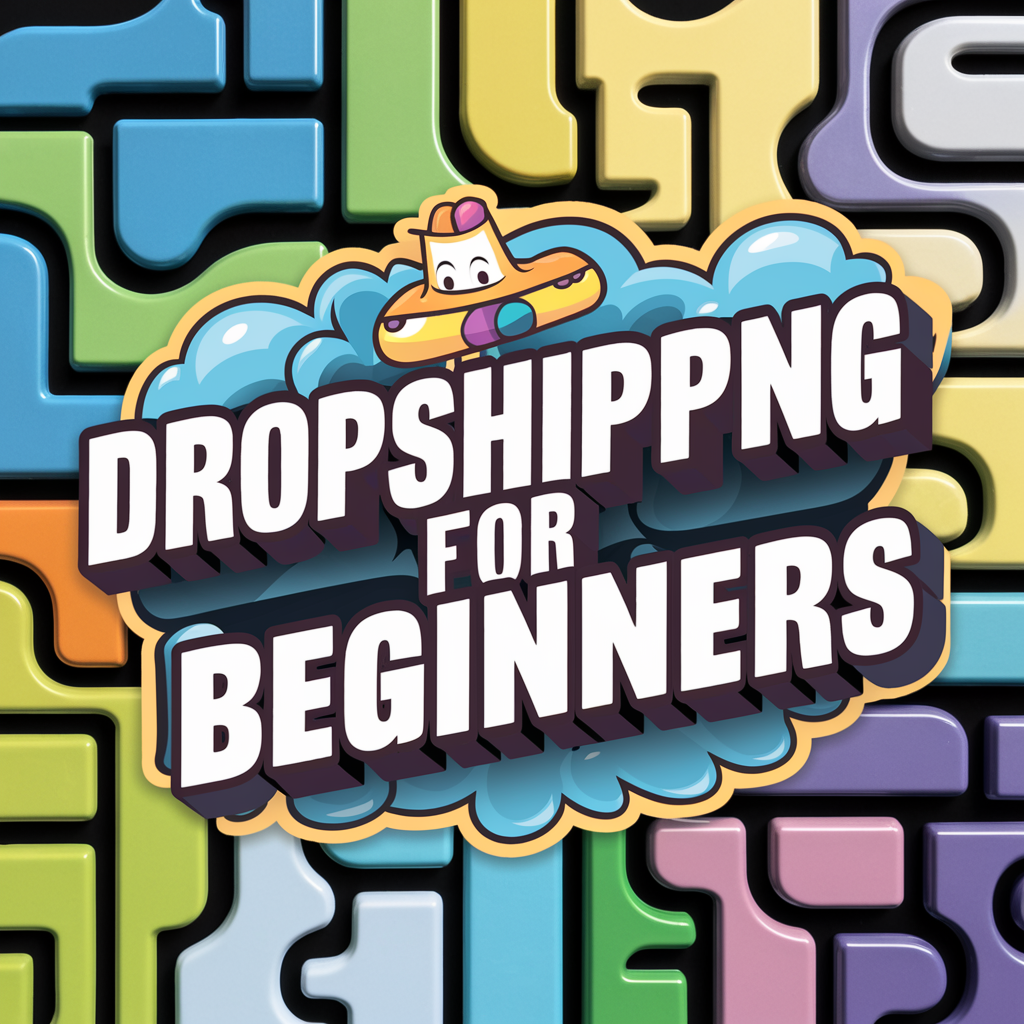Introduction to Drop Shipping
What is Drop Shipping?
Drop shipping is a retail fulfillment method where a store does not keep the products it sells in stock. Instead, when a store sells a product, it purchases the item from a third party and has it shipped directly to the customer. As a result, the merchant never sees or handles the product. This business model contrasts with traditional retailing, where the retailer must stock inventory.
Benefits of Drop Shipping
- Low Startup Costs: Since you don’t need to invest in inventory upfront, the initial costs are significantly lower compared to traditional retail businesses.
- Reduced Risk: Without the need to purchase inventory, the risk of unsold stock is eliminated.
- Wide Product Selection: You can offer a broad range of products without worrying about storage space.
- Location Independence: Drop shipping can be managed from anywhere with an internet connection.
- Scalability: As your business grows, you can scale up your operations without the constraints of physical inventory.
Common Myths About Drop Shipping
- “It’s an Easy Way to Get Rich Quick”: While drop shipping can be lucrative, it requires hard work, strategy, and dedication.
- “No Customer Support Needed”: You will still need to handle customer inquiries, returns, and complaints.
- “You Have No Competition”: Drop shipping is a competitive field, and you must differentiate your business to succeed.
- “Suppliers Handle Everything”: While suppliers fulfill orders, you must manage the website, marketing, and customer service.
Market Research and Niche Selection
Importance of Market Research
Market research is the foundation of a successful drop shipping business. It involves analyzing market trends, understanding customer needs, and identifying potential competitors. Effective market research helps you find a niche with high demand and low competition, increasing your chances of success.
How to Find a Profitable Niche
- Identify Your Interests and Strengths: Choose a niche that aligns with your passions and expertise to maintain motivation and credibility.
- Analyze Market Demand: Use tools like Google Trends, Keyword Planner, and social media insights to gauge the popularity of potential niches.
- Evaluate Competition: Research your competitors to understand their strengths and weaknesses. Look for gaps in the market that you can fill.
- Consider Profit Margins: Ensure that the products in your chosen niche have sufficient profit margins to sustain your business.
Tools for Market Research
- Google Trends: Tracks the popularity of search queries over time.
- SEMrush: Provides insights into competitors’ strategies and keyword performance.
- Ahrefs: Offers comprehensive keyword analysis and backlink data.
- Social Media Platforms: Monitor trends and hashtags to identify emerging markets.
- Online Forums and Communities: Engage with potential customers to understand their needs and preferences.
Setting Up Your Drop Shipping Business
Choosing a Business Name
Your business name should be unique, memorable, and reflective of your brand. Consider using a business name generator if you’re struggling to come up with ideas.
Registering Your Business
Registering your business is essential for legal and tax purposes. The process varies by country, but typically includes choosing a business structure (e.g., sole proprietorship, LLC), registering with local authorities, and obtaining any necessary licenses.
Setting Up Your Business Structure
- Sole Proprietorship: Simplest structure, but offers no personal liability protection.
- Limited Liability Company (LLC): Provides liability protection and flexibility in management.
- Corporation: More complex structure with potential tax benefits, but requires more paperwork and compliance.
Choosing the Right E-commerce Platform
Why Shopify is Ideal for Drop Shipping
Shopify is a popular e-commerce platform that offers a user-friendly interface, extensive customization options, and numerous integrations with drop shipping suppliers. Its robust features and scalability make it an excellent choice for beginners and experienced entrepreneurs alike.
Setting Up Your Shopify Store
- Sign Up for Shopify: Visit Shopify’s website and create an account.
- Choose a Pricing Plan: Select a plan that suits your budget and business needs.
- Set Up Your Store: Follow the setup wizard to configure basic settings, including currency, shipping, and taxes.
Customizing Your Shopify Store
- Select a Theme: Choose a theme from Shopify’s theme store that reflects your brand’s aesthetic.
- Customize the Layout: Use Shopify’s drag-and-drop editor to arrange elements on your store’s pages.
- Add Essential Pages: Create pages like About Us, Contact, and FAQ to provide important information to customers.
Buying a Domain Name
Importance of a Good Domain Name
A domain name is your store’s address on the internet. It should be easy to remember, relevant to your brand, and professional. A good domain name enhances your store’s credibility and makes it easier for customers to find you.
How to Buy a Domain Name on Namecheap.com
- Visit Namecheap.com: Go to the Namecheap website and use the search bar to check the availability of your desired domain name.
- Select a Domain Name: Choose a domain name that is available and fits your brand.
- Purchase the Domain: Follow the prompts to complete the purchase, including setting up domain privacy protection and DNS settings.
Tips for Choosing the Perfect Domain Name
- Keep It Short and Simple: Shorter domain names are easier to remember and type.
- Use Keywords: Incorporate keywords related to your niche to improve search engine visibility.
- Avoid Numbers and Hyphens: These can be confusing and hard to remember.
- Choose a .com Extension: It’s the most recognized and trusted domain extension.
Finding Reliable Suppliers
Recommended Suppliers: ChinaInvasion.com, Sunsky-Online.com, and More
- ChinaInvasion.com: Offers a wide range of electronics, gadgets, and lifestyle products at competitive prices.
- Sunsky-Online.com: Provides a vast selection of electronics, accessories, and home goods with fast shipping options.
- AliExpress: A popular platform with a diverse range of products from various suppliers.
- DHgate: Features bulk purchasing options and a variety of product categories.
How to Evaluate and Select Suppliers
- Quality of Products: Order samples to assess the quality.
- Reliability: Check supplier reviews and ratings.
- Pricing: Compare prices to ensure competitive margins.
- Shipping Times: Opt for suppliers with reasonable shipping times.
- Customer Service: Test their responsiveness and willingness to address issues.
Building Strong Relationships with Suppliers
- Communicate Regularly: Maintain open lines of communication to handle issues promptly.
- Negotiate Terms: Discuss payment terms, bulk discounts, and return policies.
- Build Trust: Be transparent and reliable in your dealings to foster a long-term partnership.
Creating Your Online Store
Designing Your Online Store
- User-Friendly Interface: Ensure your website is easy to navigate.
- Mobile Responsiveness: Optimize for mobile devices.
- Professional Design: Use high-quality images and a clean layout.
Essential Features of a Drop Shipping Store
- Product Search and Filtering: Allow customers to easily find products.
- Secure Payment Gateway: Offer multiple payment options.
- Customer Reviews: Display reviews to build trust.
Essential Features of a Drop Shipping Store (Continued)
- Automated Order Processing: Integrate with your suppliers for seamless order fulfillment.
- Customer Support Options: Provide multiple channels for customer support, such as live chat, email, and phone.
Integrating Your Shopify Store with Suppliers
- Shopify Apps: Utilize apps like Oberlo, Spocket, or AliExpress that allow you to import products directly from suppliers into your Shopify store.
- API Integration: For advanced users, consider integrating suppliers directly through APIs for more control over inventory and fulfillment processes.
- Automated Inventory Management: Ensure your store’s inventory levels are synced with your suppliers to avoid stockouts and overselling.
Product Listing and Inventory Management
How to List Products Effectively
- High-Quality Images: Use clear, high-resolution images from multiple angles.
- Compelling Descriptions: Write detailed and persuasive product descriptions that highlight features, benefits, and use cases.
- SEO Optimization: Use relevant keywords in your product titles, descriptions, and tags to improve search engine visibility.
Managing Inventory Without Holding Stock
- Inventory Management Software: Use tools like Oberlo, Inventory Source, or Syncee to keep track of stock levels.
- Automated Alerts: Set up alerts for low stock levels to avoid stockouts.
- Supplier Coordination: Regularly communicate with suppliers to ensure product availability and manage expectations.
Using Automation Tools
- Order Processing: Automate order forwarding to suppliers using Shopify apps or API integrations.
- Customer Notifications: Send automated updates on order status to keep customers informed.
- Inventory Syncing: Use tools to ensure your store’s inventory matches your suppliers’ stock levels in real-time.
Marketing Your Drop Shipping Store
SEO Strategies for Drop Shipping
- Keyword Research: Identify high-traffic keywords related to your niche using tools like Google Keyword Planner, Ahrefs, and SEMrush.
- On-Page SEO: Optimize product titles, meta descriptions, and content with relevant keywords. Ensure your website is mobile-friendly and has fast loading times.
- Content Marketing: Create valuable content such as blog posts, guides, and videos to attract and engage your target audience.
- Backlink Building: Acquire backlinks from reputable websites to boost your site’s authority and improve search engine rankings.
Social Media Marketing
- Platform Selection: Choose platforms where your target audience is active, such as Facebook, Instagram, Pinterest, and TikTok.
- Content Strategy: Share a mix of promotional and engaging content, including product images, customer testimonials, behind-the-scenes videos, and educational posts.
- Influencer Collaborations: Partner with influencers to reach a wider audience and build credibility for your brand.
Paid Advertising Options
- Google Ads: Target potential customers through search and display ads. Use Google Shopping ads to showcase your products directly in search results.
- Facebook Ads: Use Facebook’s detailed targeting options to reach specific demographics, interests, and behaviors. Test different ad formats, such as carousel ads, video ads, and dynamic product ads.
- Instagram Ads: Leverage Instagram’s visual platform for product promotion. Utilize features like Stories, Reels, and Shopping to engage with your audience.
Order Fulfillment and Customer Service
Streamlining the Order Fulfillment Process
- Automated Order Processing: Use Shopify apps to automatically forward orders to suppliers for fulfillment.
- Efficient Shipping: Choose suppliers with reliable shipping methods and track shipping performance regularly.
- Tracking and Notifications: Keep customers informed about their order status with automated tracking updates and notifications.
Handling Returns and Refunds
- Clear Policy: Establish a straightforward returns and refunds policy that is easy for customers to understand.
- Efficient Processing: Handle returns promptly to maintain customer satisfaction and loyalty.
- Supplier Coordination: Work with suppliers to manage returns effectively and ensure defective products are handled appropriately.
Providing Excellent Customer Service
- Responsive Support: Offer multiple channels for customer support, such as live chat, email, and phone. Respond to inquiries promptly and professionally.
- Customer Feedback: Encourage customers to leave reviews and feedback. Use this information to improve your products and services.
- Personalized Assistance: Provide personalized assistance to customers by addressing their specific needs and concerns.
Scaling Your Drop Shipping Business
Analyzing Performance Metrics
- Key Metrics: Monitor key performance indicators (KPIs) such as conversion rate, average order value, customer acquisition cost, and return on ad spend.
- Google Analytics: Use Google Analytics to track website traffic, user behavior, and conversion paths.
- Shopify Analytics: Leverage Shopify’s built-in analytics to gain insights into sales performance, customer behavior, and inventory management.
Expanding Product Lines
- Market Research: Continuously research market trends and customer preferences to identify new product opportunities.
- Supplier Relations: Work with existing suppliers to expand your product offerings. Consider adding complementary products to increase average order value.
- Testing and Validation: Test new products on a small scale before fully integrating them into your store. Use customer feedback to validate demand.
Outsourcing and Automation
- Outsource Tasks: Delegate tasks such as customer service, order processing, and marketing to freelancers or agencies to free up your time for strategic planning.
- Automation Tools: Use automation tools to streamline repetitive tasks, such as inventory management, order processing, and email marketing.
- Scaling Marketing Efforts: Invest in scalable marketing strategies, such as paid advertising, influencer collaborations, and content marketing, to reach a larger audience.
Common Challenges and How to Overcome Them
Handling Competition
- Unique Value Proposition: Differentiate your store by offering unique products, superior customer service, or exclusive deals.
- Branding: Build a strong brand identity that resonates with your target audience. Use consistent branding elements such as logo, color scheme, and messaging.
- Customer Loyalty: Implement loyalty programs, discounts, and special offers to retain customers and encourage repeat purchases.
Dealing with Shipping Issues
- Reliable Suppliers: Choose suppliers with a track record of reliable shipping and delivery times.
- Clear Communication: Communicate shipping policies and estimated delivery times clearly on your website.
- Tracking and Updates: Provide customers with tracking information and regular updates on their order status.
Managing Customer Expectations
- Transparent Policies: Clearly communicate your return, refund, and shipping policies to set customer expectations.
- Realistic Delivery Times: Provide accurate delivery estimates based on supplier shipping times. Avoid overpromising and underdelivering.
- Proactive Communication: Keep customers informed about any delays or issues with their orders. Offer solutions and alternatives when necessary.
Conclusion
Recap of Key Points
Starting a drop shipping business as a beginner involves several critical steps, including market research, niche selection, setting up your online store, finding reliable suppliers, and implementing effective marketing strategies. By leveraging platforms like Shopify, purchasing a domain name from Namecheap.com, and sourcing products from suppliers like ChinaInvasion.com and Sunsky-Online.com, you can build a successful drop shipping business with minimal upfront investment.
Encouragement for Aspiring Drop Shippers
Drop shipping offers a unique opportunity for aspiring entrepreneurs to start a business with low initial costs and minimal risk. While the journey may be challenging, dedication, strategic planning, and continuous learning will pave the way for success. Embrace the process, stay adaptable, and focus on providing value to your customers. With persistence and hard work, you can achieve your drop shipping business goals.
Additional Resources
- Shopify: Shopify Website
- Namecheap: Namecheap Website
- ChinaInvasion: ChinaInvasion Website
- Sunsky-Online: Sunsky-Online Website
- Oberlo: Oberlo Website
- Spocket: Spocket Website
- Google Trends: Google Trends
- SEMrush: SEMrush Website
- Ahrefs: Ahrefs Website
By following this comprehensive guide, you’ll be well-equipped to start and grow a successful drop shipping business. Good luck on your entrepreneurial journey!




